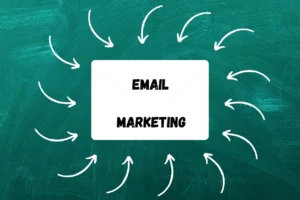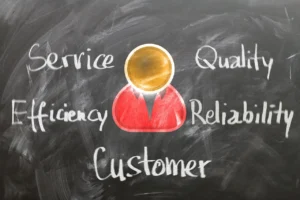How do the world’s most successful companies stay relevant, build massive followings, and create emotional connections with their audience? The answer lies in exceptional branding, which goes beyond large budgets and traditional advertising. While financial resources help, many companies with similar budgets fail to achieve the same level of impact.
What sets top brands apart is their ability to connect with people on a deeper level through winning content marketing tips by copywriting. They leverage strategic partnerships, build communities, and create unforgettable experiences to foster loyalty and trust.
This guide explores powerful branding lessons that small businesses can adopt from global giants. These strategies focus on mastering winning content marketing tips by copywriting to elevate your brand and engage your audience effectively.

Tip1:
The Power of Storytelling in Branding
Tip2:
Partnering with Influencers and Advocates
In the world of branding, one of the most effective ways to increase reach and build credibility is through partnerships with influencers and brand advocates. Winning content marketing tips by copywriting often emphasize the power of strategic partnerships that leverage the influence of individuals with large followings or passionate customer bases. Whether it’s through social media endorsements, collaborative campaigns, or user-generated content, working with influencers and advocates can elevate your brand’s visibility and trust.
The Role of Influencers in Branding
Influencers play a vital role in content marketing by helping brands expand their reach and establish authenticity. Winning content marketing tips by copywriting highlight how partnering with influencers can amplify your message in a way that feels organic and credible. When influencers endorse your brand, it can lead to new audiences discovering your products or services while also boosting your brand’s credibility.
A great example of this is Starbucks. Starbucks has cultivated a loyal base of advocates who actively promote the brand both online and offline. The company has even created platforms like MyStarbucksIdea.com, which allows customers to provide feedback, share ideas, and engage directly with the brand. This initiative strengthens customer relationships and fosters a sense of community around the brand, allowing Starbucks to continually expand its reach.
How to Build Strategic Partnerships
Building successful partnerships requires careful planning and a genuine connection between your brand and its advocates. Here are some winning content marketing tips by copywriting to help you form impactful relationships with influencers and loyal customers:
1. Engage Loyal Customers
One of the best ways to create strong brand advocates is by nurturing your existing customer base. Loyal customers who are already passionate about your brand are often willing to share their experiences with others. Encourage reviews and testimonials from happy customers, and make it easy for them to provide feedback on social media. When your customers feel valued, they are more likely to become vocal advocates who spread the word about your brand.
A simple yet effective strategy is to reach out to satisfied customers and ask them to share their positive experiences in a blog post, on social media, or through a video testimonial. By highlighting your happy customers, you not only increase brand visibility but also build trust with potential new customers who see the value of your product through authentic experiences.
2. Collaborate with Influencers
Influencer marketing is one of the most powerful ways to enhance your brand’s reach and credibility. Partnering with influencers who align with your values and target audience can dramatically boost brand visibility. Influencers have already established trust with their followers, and when they endorse your product, it feels like a recommendation from a friend.
To maximize the impact of your partnerships, ensure that the influencers you work with share similar brand values and resonate with your target audience. Winning content marketing tips by copywriting suggest crafting personalized outreach messages when collaborating with influencers to ensure that the partnership feels authentic and relevant to their followers. Whether through sponsored content, product reviews, or giveaways, influencers can bring a fresh and compelling voice to your brand.
3. Leverage User-Generated Content
Another powerful strategy for expanding your brand’s reach is through user-generated content (UGC). Encouraging your audience to create and share content that features your product or service is a great way to build credibility and authenticity. UGC can be shared on social media, your website, or other marketing channels to showcase how real people are using and enjoying your products.
One simple way to promote UGC is by creating branded hashtags or running photo contests where users can share their own experiences with your brand. This type of engagement not only strengthens relationships with current customers but also introduces your brand to a broader audience.
The Ripple Effect of Strategic Partnerships
When executed correctly, partnerships with influencers and advocates create a ripple effect that extends your brand’s reach and boosts its credibility. By collaborating with those who already have the trust of their followers or customers, your brand gains access to new audiences and potential customers who are more likely to trust your product or service.
The power of winning content marketing tips by copywriting lies in the ability to craft compelling partnerships that feel genuine and relevant. With the right strategies, influencer collaborations and customer advocacy can become key drivers of your brand’s success, helping you build a loyal following and expand your influence.
Tip3:
Building a Community to Spark Conversations
Building a community is one of the most effective strategies for creating lasting brand loyalty and organic engagement. Successful brands understand that a strong community not only enhances their visibility but also cultivates long-term relationships and advocacy. By fostering genuine conversations around your brand, you can enhance customer loyalty and create a supportive network of advocates.
In this guide, we will discuss winning content marketing tips by copywriting that can help you build and nurture a thriving community for your brand. Drawing inspiration from top-tier brands, you’ll learn how to spark meaningful discussions, engage with your audience, and create a sense of belonging.
Community Building as a Branding Strategy
A thriving community is central to many of the world’s most successful brands. These communities consist of people who are not just passive consumers, but active participants in your brand’s mission. A strong community fuels brand loyalty, advocacy, and valuable feedback, making it an essential part of any content marketing strategy.
For example, Nike has built one of the most influential communities on social media. Their Facebook pages boast millions of followers who actively engage in conversations about sports, products, and fitness-related topics. Nike keeps its community engaged by consistently sharing fresh, relevant content that resonates with its audience. This approach ensures that the brand stays top-of-mind, while its community continues to grow and thrive.
How to Build Your Brand’s Community
Building a brand community requires more than just having a presence on social media. To cultivate a strong, engaged community, you need to ensure your content resonates with your audience and encourages participation. Here are some winning content marketing tips by copywriting to help you establish and grow your brand’s community:
1. Choose the Right Platforms
The first step in building a community is choosing the right platforms where your target audience spends their time. Whether it’s Facebook, Instagram, LinkedIn, or niche forums, it’s essential to establish a presence on platforms that are most relevant to your audience. By doing so, you can focus your efforts on creating tailored content that appeals to the specific needs, interests, and pain points of your community.
For example, if you have a business focused on fitness, platforms like Instagram and YouTube may be ideal for sharing visual content, workout tutorials, and fitness challenges. By identifying where your audience is already active, you can foster genuine conversations and engagement around your brand.
2. Encourage Interaction
One of the most powerful winning content marketing tips by copywriting is to create content that sparks engagement. Instead of posting only promotional messages, share content that encourages your audience to comment, share, and start conversations. This can be done by asking open-ended questions, running polls, or sharing thought-provoking articles that encourage discussion.
For example, asking your followers to share their thoughts on a recent product launch or asking for feedback on a campaign can open the door for deeper engagement. By making your audience feel like their opinions matter, you create a sense of ownership and belonging within the community.
3. Host Events
Virtual or in-person events are another great way to build and nurture a community. These events allow your audience to connect with your brand and each other in meaningful ways. Hosting live Q&A sessions, product launches, webinars, or even virtual meetups can bring your community together and strengthen relationships.
Winning content marketing tips by copywriting suggest that these events should be centered around value—whether it’s offering exclusive insights, expert advice, or an inside look at your brand. Events allow you to interact directly with your audience, respond to questions in real-time, and create memorable experiences that resonate with your community.
4. Showcase User-Generated Content
User-generated content (UGC) is one of the most powerful tools for community building. Encourage your audience to share their experiences with your products or services and showcase these submissions on your platforms. UGC not only provides social proof but also helps your followers feel like they’re part of your brand’s journey.
For example, you could run campaigns that encourage users to share photos or videos using your product, which you can then feature on your social media pages or website. This type of content encourages community participation and makes your audience feel more connected to your brand.
The Importance of Nurturing Your Community
A vibrant community doesn’t just happen overnight—it takes time, effort, and consistency. By following these winning content marketing tips by copywriting, you can create an environment where your audience feels valued and engaged. A strong community leads to more authentic brand advocacy, loyalty, and organic conversations that can drive growth for your brand.
Incorporating community-building strategies into your content marketing plan not only helps you stay relevant but also establishes a strong foundation for long-term success. By nurturing relationships and encouraging dialogue, you can keep your brand top-of-mind and inspire your community to become passionate advocates for your business.
Tip4:
Create Remarkable Customer Experiences
In today’s competitive market, delivering remarkable customer experiences is a crucial element in building strong, lasting relationships with your audience. The brands that stand out aren’t necessarily the ones with the flashiest ads or the most extensive product lines—they are the ones that create experiences that make customers feel valued and understood. This leads to customer loyalty, trust, and advocacy, which are key to long-term success.
In this article, we will explore winning content marketing tips by copywriting to help you create exceptional experiences for your customers that leave a lasting impression.
Why Experiences Matter in Branding
Customer experiences have become a central component of branding. A great experience doesn’t just drive satisfaction—it creates advocacy. When customers feel that a brand genuinely cares about their needs and goes the extra mile to meet them, they are more likely to become loyal advocates who spread positive word-of-mouth.
For example, Nike sets a high standard for customer experiences. The brand’s dedicated Twitter handle for customer support allows them to respond quickly to inquiries and address issues in real-time. This personalized, responsive service is a key factor in building trust and reinforcing Nike’s reputation as a brand that puts customers first. By focusing on experiences, Nike has not only earned loyal customers but also fostered an entire community of brand advocates.
How to Deliver Exceptional Experiences
Creating remarkable customer experiences involves more than just providing a great product or service. It requires attention to detail, responsiveness, and a genuine desire to meet customer expectations. Here are some winning content marketing tips by copywriting to help you deliver exceptional experiences to your customers:
1. Be Responsive
Responsiveness is one of the most effective ways to create positive customer experiences. In the digital age, customers expect quick answers to their questions and swift resolution of any issues. Whether it’s responding to an email, social media comment, or a live chat inquiry, providing timely, thoughtful responses shows that you value your customers’ time and concerns.
Make it a priority to address customer inquiries within a reasonable time frame. When you do, you enhance their overall experience with your brand, and they are more likely to trust you moving forward.
2. Personalize Interactions
Customers appreciate when brands take the time to understand their individual needs and preferences. Personalized interactions create a sense of connection and make customers feel valued. This can be achieved by using their names, referring to their past purchases or interactions, and tailoring your communication to address their specific concerns.
Incorporating personalized content into your marketing efforts is one of the winning content marketing tips by copywriting. For instance, if you’re sending out an email newsletter, use customer segmentation to send targeted messages that speak to each customer’s unique needs. Personalized messaging can turn a generic interaction into a memorable one that strengthens the relationship between your brand and the customer.
3. Surprise and Delight
Exceeding customer expectations is one of the best ways to build long-term loyalty. A little surprise goes a long way in creating a remarkable customer experience. Whether it’s a small freebie, a handwritten thank-you note, or an unexpected discount, going above and beyond to delight your customers makes them feel special and appreciated.
For example, many e-commerce brands send personalized thank-you notes along with their products or include small surprise gifts in their orders. These gestures, while simple, show customers that your brand cares about them beyond just making a sale. Incorporating these kinds of surprises into your customer experience can enhance the emotional connection customers feel with your brand.
4. Incorporate Customer Feedback
Listening to your customers is crucial for creating remarkable experiences. Regularly gather feedback through surveys, online reviews, or direct conversations with customers. Use this feedback to improve your products, services, and overall customer experience.
For instance, if a customer expresses frustration with a specific aspect of your service, respond to it by addressing the issue in your content or marketing strategy. By showing that you are actively working to improve based on customer input, you create an environment where customers feel heard and valued.
Exceptional Experiences Lead to Advocacy
Ultimately, delivering exceptional customer experiences is about building trust and loyalty. When you consistently go the extra mile to meet customer needs, you create positive emotional connections that lead to long-term advocacy.
By applying these winning content marketing tips by copywriting, you can craft memorable customer experiences that not only meet but exceed expectations. As a result, your customers will become champions of your brand, recommending it to friends, family, and colleagues. This word-of-mouth advocacy is one of the most valuable assets a brand can have and can be achieved through the power of remarkable experiences.
Tip5:
Consistency is Key
When it comes to building a strong, recognizable brand, consistency is one of the most powerful tools in your arsenal. Whether it’s your messaging, visuals, or customer interactions, maintaining a consistent presence ensures that your brand remains top of mind for your audience. In this article, we’ll explore why consistency is crucial for successful content marketing and share some winning content marketing tips by copywriting to help you stay consistent and keep your audience engaged.
The Importance of Consistency in Content Marketing
Consistency is the foundation of a brand’s credibility and trustworthiness. When a brand delivers regular, high-quality content and maintains a uniform voice across all channels, it signals reliability and professionalism to its audience. On the other hand, inconsistent communication can make a brand appear unreliable or out of touch with its audience.
Take Nike and Starbucks, for example. Both brands excel at maintaining a consistent presence across social media, email, and other digital platforms. Nike shares motivational content, updates about new products, and posts that align with its core values. Starbucks, meanwhile, keeps its audience engaged with regular updates about seasonal offerings and loyalty programs. This consistency strengthens their relationship with customers and helps them stay relevant in a competitive market.
As a copywriter, leveraging winning content marketing tips by copywriting means recognizing the value of consistency in your content strategy. When you stay consistent with your messaging, visuals, and overall brand tone, you create a sense of reliability that keeps your audience engaged and loyal to your brand.
How to Stay Consistent with Your Content Marketing Strategy
Now that we understand the importance of consistency in branding, here are some practical winning content marketing tips by copywriting to ensure your content stays consistent across all channels.
1. Develop a Content Plan
One of the most effective ways to maintain consistency is by having a clear content plan. This plan should outline the topics you will cover, the formats (such as blogs, videos, or social media posts), and the schedule for publishing content. With a content plan in place, you can ensure that you’re regularly posting relevant and timely content that aligns with your brand’s goals.
A content calendar is an invaluable tool for staying on track. It helps you visualize your posting schedule, plan content in advance, and avoid the stress of last-minute content creation.
2. Standardize Your Branding
Brand consistency is not only about the message but also about visuals. Your branding should remain consistent across all platforms, from your website to social media and email marketing. This includes using the same logo, color palette, font styles, and tone of voice. When people interact with your brand, they should immediately recognize it, regardless of where they encounter it.
To maintain this consistency, create brand guidelines that specify how your visuals and messaging should appear across different channels. These guidelines should cover everything from the design of your website to the tone you use in your blog posts and social media updates. By keeping everything standardized, your audience will have a seamless and recognizable experience every time they engage with your content.
3. Monitor Performance and Adjust
To ensure that your content is resonating with your audience, it’s important to monitor the performance of your posts and campaigns. Use analytics tools to track engagement rates, click-through rates, and conversions. This data will give you insights into what is working well and what may need improvement.
With this information, you can adjust your content strategy to improve your consistency and effectiveness. For example, if certain types of content (like video or infographics) are driving more engagement, you can prioritize those formats in the future. By continuously optimizing your content based on performance, you can ensure that your content remains consistent and valuable to your audience.
Why Consistency Builds Trust
Ultimately, consistency in content marketing builds trust with your audience. When customers know what to expect from your brand and can rely on you for regular updates and quality content, they are more likely to engage with your brand and become loyal customers. Consistency creates a sense of reliability, and this reliability fosters a strong emotional connection with your audience.
For your brand to stay top of mind and continue to grow, it’s crucial to remain consistent in your approach to content marketing. By following these winning content marketing tips by copywriting, you can ensure that your brand maintains a steady presence, builds trust with your audience, and achieves long-term success.
In summary, consistency is not just about being regular in your content creation but also about staying true to your brand’s identity. Whether you’re crafting blog posts, social media updates, or email newsletters, these winning content marketing tips by copywriting will help you maintain a consistent voice, message, and tone that resonates with your audience and enhances your brand’s overall effectiveness.
Tip6:
Leverage Copywriting to Enhance Your Strategy
In today’s digital world, content marketing is a key driver of brand success. However, creating high-quality content isn’t just about producing visuals or posting frequently—it’s about using the right words to engage, inform, and convert your audience. That’s where winning content marketing tips by copywriting come into play.
Copywriting is the backbone of effective content marketing, transforming simple messages into compelling stories that inspire action. From social media captions to email campaigns, blog posts, and website copy, well-crafted content has the power to capture attention and drive results. In this article, we’ll explore winning content marketing tips by copywriting that can take your strategy to the next level.
The Power of Copywriting in Content Marketing
Copywriting plays a crucial role in shaping a brand’s identity and influencing audience behavior. Great copy doesn’t just describe a product or service—it tells a story, evokes emotion, and encourages the reader to take action. Whether you’re writing an ad, an email subject line, or a social media post, using strategic copy can help build relationships and increase engagement.
For instance, brands like Apple, Nike, and Airbnb leverage powerful copywriting to create messages that resonate with their audiences. Their content isn’t just about selling a product—it’s about selling an experience and a lifestyle. This approach is a prime example of winning content marketing tips by copywriting in action.
Tips for Effective Copywriting in Content Marketing
To make the most of copywriting in your content strategy, follow these winning content marketing tips by copywriting to enhance your brand’s messaging and engagement.
1. Focus on Benefits, Not Just Features
One of the most important winning content marketing tips by copywriting is to focus on how your product or service improves your audience’s life. Instead of simply listing features, highlight the benefits and solutions it provides.
For example, instead of saying:
🚫 Our software has advanced AI-powered automation.
Say:
✅ Save hours of manual work with AI-powered automation that simplifies your workflow.
By emphasizing the benefits, you make your content more relatable and compelling.
2. Use Clear and Actionable CTAs
Every piece of content should have a clear Call-to-Action (CTA). Without a strong CTA, your audience might enjoy your content but not take the next step. Whether it’s making a purchase, signing up for a newsletter, or following your brand on social media, your CTA should be concise and persuasive.
Effective CTAs include:
- “Shop Now and Get 20% Off!”
- “Subscribe Today for Exclusive Tips!”
- “Download Your Free Guide Here!”
A compelling CTA makes it easier for your audience to engage with your content and move further down the marketing funnel.
3. Tell Stories That Resonate
Storytelling is a powerful technique that can set your brand apart. People connect with stories, making them more likely to remember and engage with your content. Brands that weave storytelling into their messaging create emotional connections that drive brand loyalty.
Instead of simply stating facts, create a narrative around your product:
- Share customer success stories.
- Highlight the journey behind your brand.
- Use testimonials to add authenticity.
For example, rather than saying:
🚫 Our skincare line is made from natural ingredients.
Try:
✅ Meet Sarah, a busy mom who struggled with dry skin. After using our all-natural skincare line, her skin is healthier and glowing—just like she always wanted!
This storytelling approach makes your content more engaging and relatable.
4. Keep Your Copy Concise and Clear
Another winning content marketing tip by copywriting is to avoid overly complex or lengthy content. Keep your writing simple, direct, and engaging.
Best practices include:
- Using short sentences and paragraphs.

What are the Winning Content Marketing Tips by Copywriting - Breaking up text with bullet points or subheadings.
- Avoiding jargon and technical terms.
The easier your content is to read, the more likely it is to capture and retain attention.
5. Match Your Copy with Strong Visuals
Copywriting and visuals should work together to create a cohesive content experience. A well-crafted message paired with a powerful image or video can enhance engagement and memorability.
For example:
- A social media post with a motivational quote and an eye-catching image.
- An email campaign featuring a compelling headline alongside an engaging GIF.
- A landing page with persuasive copy and a high-quality product image.
Combining words and visuals strategically ensures your audience stays interested and connected to your brand.
Why Copywriting is Essential for Content Marketing Success
The right words have the power to influence, persuade, and inspire action. By implementing winning content marketing tips by copywriting, brands can create compelling messages that drive traffic, boost engagement, and increase conversions.
By focusing on benefits, crafting strong CTAs, telling relatable stories, keeping content clear, and pairing copy with visuals, you can create a content marketing strategy that resonates with your audience and delivers real results.
Start applying these winning content marketing tips by copywriting today, and watch your content marketing efforts become more impactful than ever.
Conclusion:
The success of the world’s top brands isn’t solely due to their budgets it’s their ability to connect with people through winning content marketing tips by copywriting, community building, and exceptional experiences. These strategies are accessible to businesses of all sizes and can be implemented with a focus on content marketing by copywriting.
Start applying these lessons to your brand today, and watch as your audience engagement and loyalty grow. With consistent effort and creativity, your brand can achieve remarkable success.







































